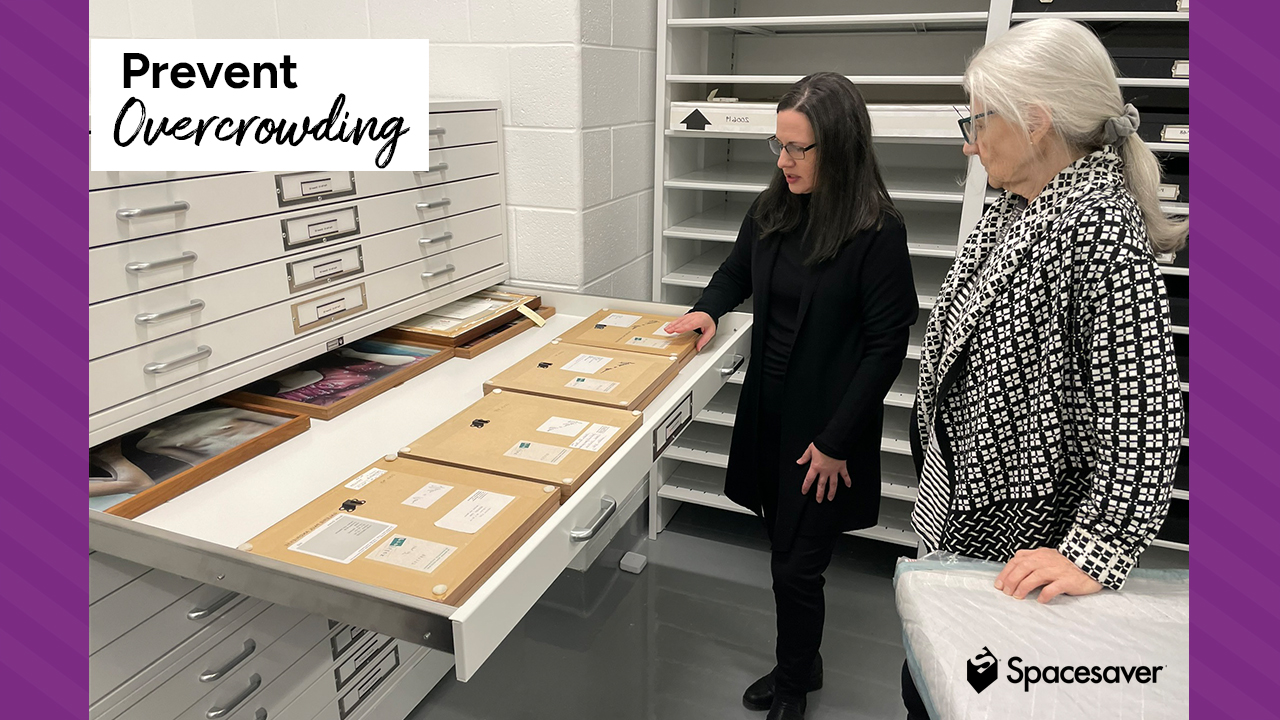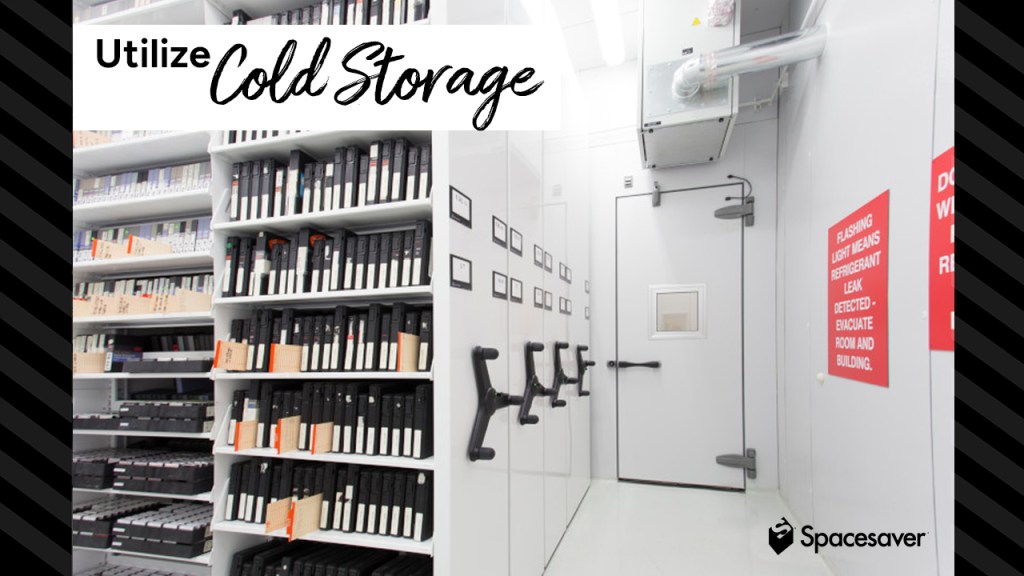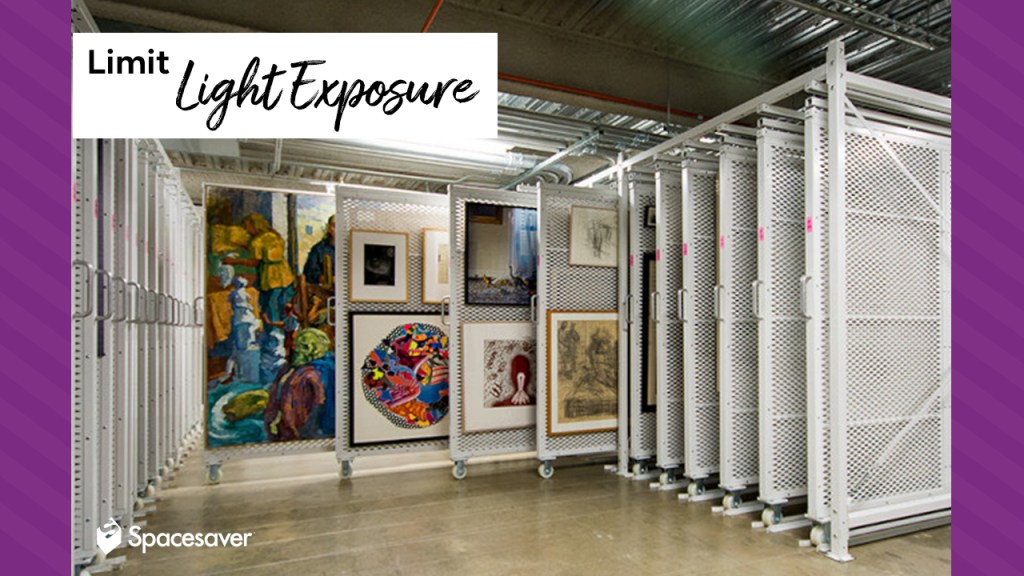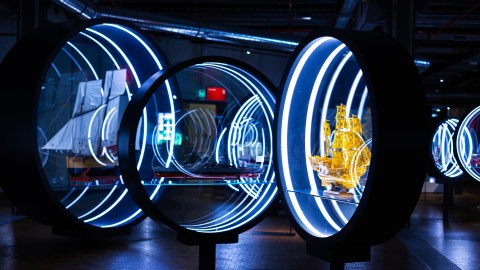
This post is an advertorial written by an organization that serves the museum field. The views, opinions, and positions expressed by the authors and those providing comments are theirs alone and do not necessarily reflect the views, opinions, or positions of AAM or its employees.
Museum exhibits are a tremendous educational resource for a vast range of topics. But these exhibits are only as effective as the items in their collections. Museum curators dedicate themselves to preserving these priceless artifacts and are frequently exploring new ways to ensure the longevity of these items.
At Spacesaver, our team of experts have been working with museum curators and staff for decades, continually expanding our storage systems’ ability to better store artifacts and serve patrons. Museum personnel can protect their collections by implementing solutions to mitigate damage caused by everyday challenges.
Prevent Overcrowding
Having more items in a collection allows museums to share more detail on their particular subject matter. However, as collections grow, securing these items can become challenging. Consider these five steps to manage risk related to overcrowding.
1. Assess Space
Obtain accurate measurements of your existing equipment as well as structural features such as ceiling heights, sprinkler placement, columns, ductwork, and more.
2. Assess Collections
Assess current storage volumes for each of your collections, along with projected growth rates. Make special note of large, heavy, or odd-sized objects or artifacts that need extra-special care.
3. Evaluate Existing Equipment
If existing equipment is in good condition, it may be incorporated into new storage systems. For example, Spacesaver designs Museum Cabinets and High-Density Mobile Storage systems that allow shelving and drawers to be repurposed while creating space for additional storage.
4. Create Sketches and Drawings
After gathering more info about your space and collections, develop detailed plans for uncrowding your collections care area. These drawings also can help secure funding because potential donors can see how updates will help manage the risk of loss or dissociation.
5. Consider Configurability
If new storage equipment is needed, be sure to consider configurability as you evaluate your options. Configurable equipment refers to cabinets, textile racks, shelving, and even compactor systems that can be changed over time to make room for new acquisitions or items on loan while improving organization, efficiency, and access.

Utilize Cold Storage
Coolers and freezers provide the best possible preservation environment for a variety of sensitive materials. Cold storage is expensive to build and operate, so it’s essential to understand the needs of your collections. Careful planning reduces building and operating costs. Approach projects with these five steps.
1. Collection Assessment
Identify and sort by items that need cold storage, frozen storage, or typical archival storage. Measure the amount of space required to store current items and add curators’ estimates for future space needs.
2. Policy & Procedure Development
Describe how researchers and others will request access to stored materials. Who will be entrusted with access to cold storage areas; where and how will materials be acclimated as they are transferred in and out of cold storage; and where and how will researchers be allowed to study materials?
3. Item Designations
Determine how various items will be stored. Smaller collections can be stored in refrigerators or freezers if the units maintain a constant temperature. Medium-sized collections can be stored on shelving or museum cabinets housed in small walk-in coolers. Larger collections are generally stored in compactors housed in purpose-built cold rooms and walk-in freezers.
4. Moving Plan
Work with vendors to coordinate delivery and installation dates, and assign who will be responsible for scanning, cataloging, acclimatizing, and moving items. Determine procedures to monitor temperature and relative humidity.
5. Cold Storage Optimization
Adjust shelving to avoid wasting space between shelves, and keep in mind that compactors consolidate materials into a smaller space. Installing Spacesaver High-Density Mobile Storage systems in a cold storage space can double the usable storage space without expanding your room size.

Limit Light Exposure
Limiting unnecessary light exposure is a major focus as museums seek to balance collection preservation with access and visibility. Here are five steps that limit light exposure.
1. Block Windows
Most modern collections storage areas are windowless, but if your collections storage area is in a historic building, you’ll need to utilize shades and heavy curtains. Check with your facility’s building manager to maintain compliance with egress codes.
2. Consider Sliding Art Racks
Sliding art racks offer visitors a glimpse into collections while allowing museum staff to control which paintings are exposed to light. This solution also minimizes the risks inherent to handling and transport because the entire racks are moved instead of moving individual paintings.
3. Determine Acceptable Light Levels
Some materials, like stone, metal, and glass, are less affected by light exposure, while others will degrade quickly if exposed to light. Work with experts like Spacesaver’s museum storage professionals to determine the appropriate light levels for the materials in your storage and work areas.
4. Cover or Contain Sensitive Objects
If ambient light can’t be limited, cover sensitive objects with a non-reactive material or place them in a museum cabinet to protect them. Remove them from their protective environment only when they are needed for research, conservation, or other specific uses.
5. Turn Off the Lights
Don’t overlook the importance of posting signs reminding staff and visiting researchers to turn off the lights when they leave collections storage areas. Invest in motion detectors to help prevent unnecessary light exposure.
Partner with a Trusted Source
Work with a comprehensive storage solution provider to ensure your next project is perfectly suited for the specific needs of your collections. Beyond innovative storage solutions that preserve museum collections, Spacesaver offers valuable resources like continuing education courses, design and architecture resources, and purchasing contracts to help you select the perfect option for your location.
Our local consultants, in-house engineers, and manufacturing professionals will partner with your team to help preserve the past and prepare for the future. Contact us today to arrange a free, no-obligation space assessment.
About Spacesaver
Spacesaver, originally known for pioneering compact mobile storage, also manufactures a full range of customizable storage solutions optimized for every industry. Beyond our standard product lines, we frequently work with designers, architects, and clients to create custom solutions for unique spaces and applications. Our in-house teams of engineers, project managers, and manufacturers work with our extensive distribution network to provide clients with reliable, well-designed storage solutions that optimize space, streamline workflows, and integrate seamlessly into any space.








